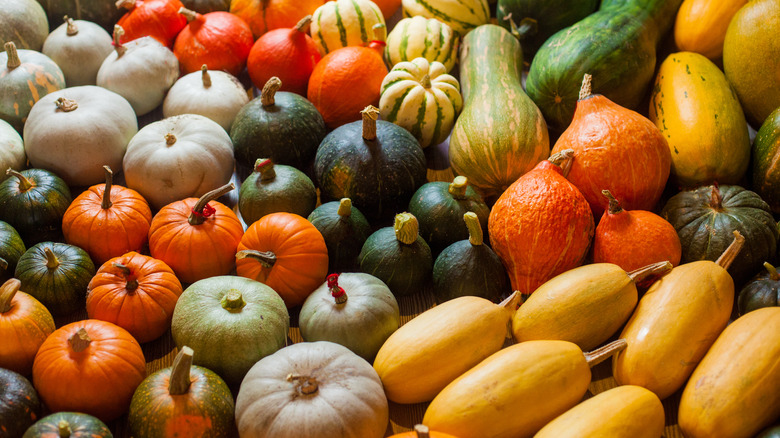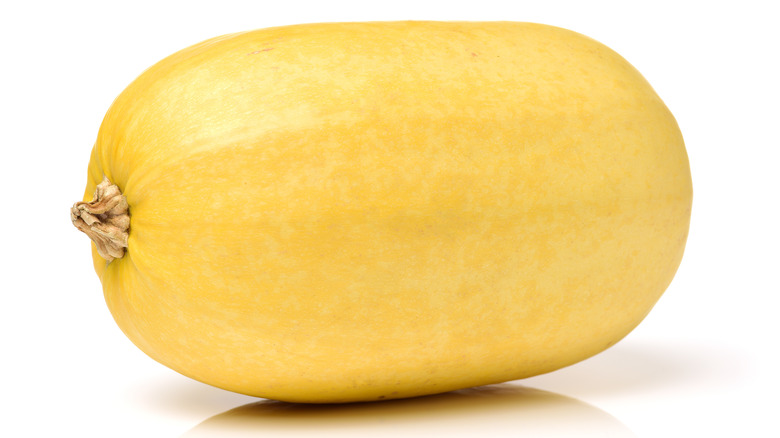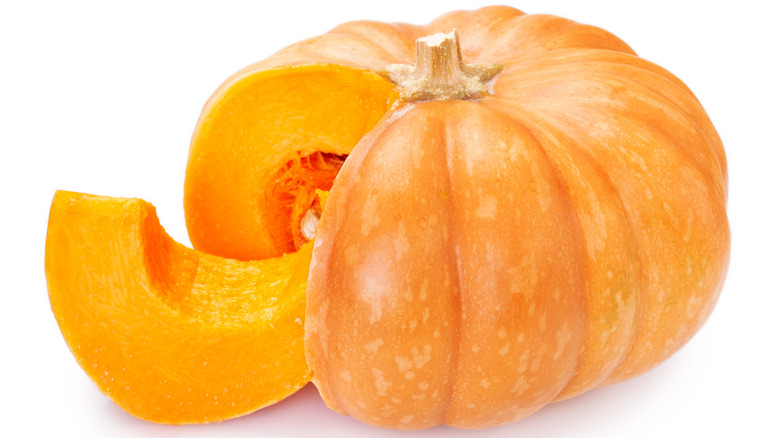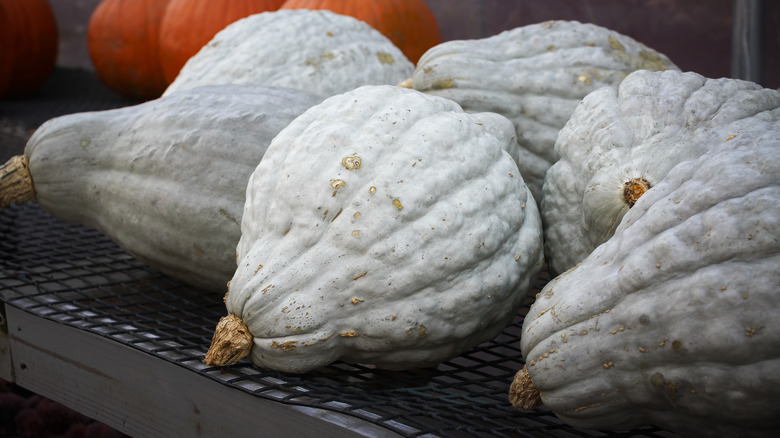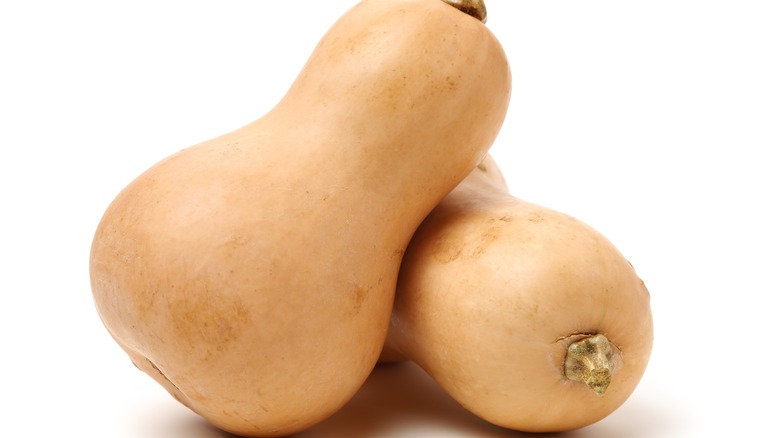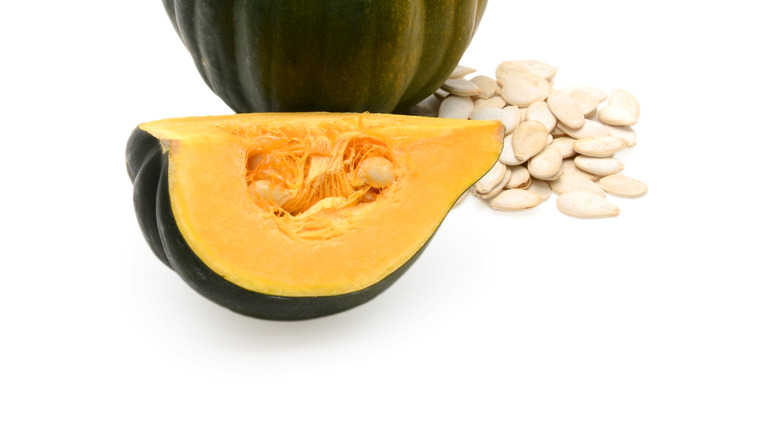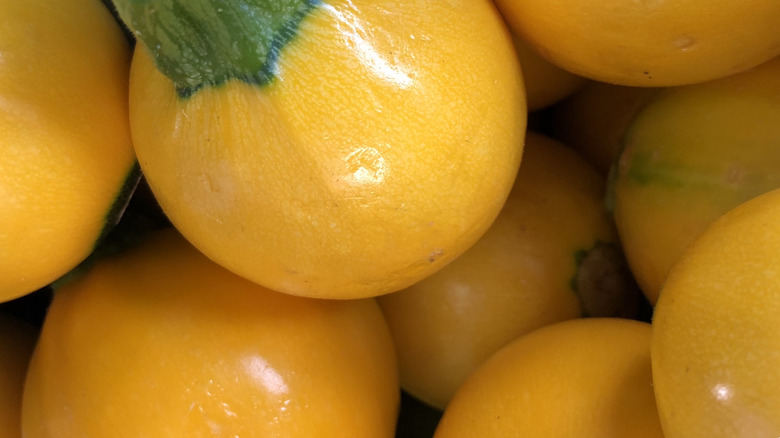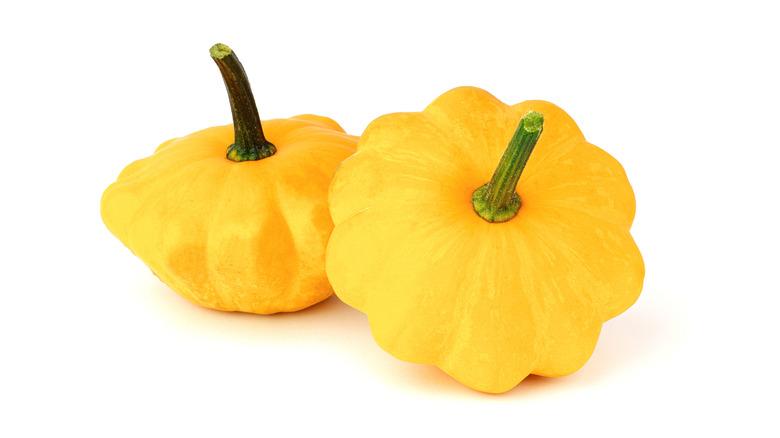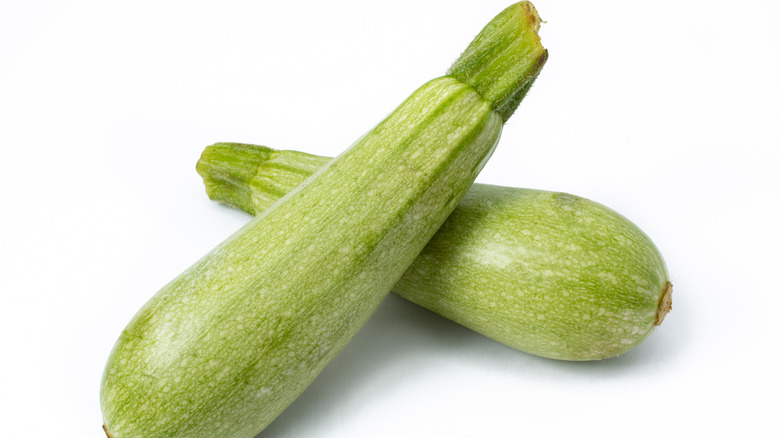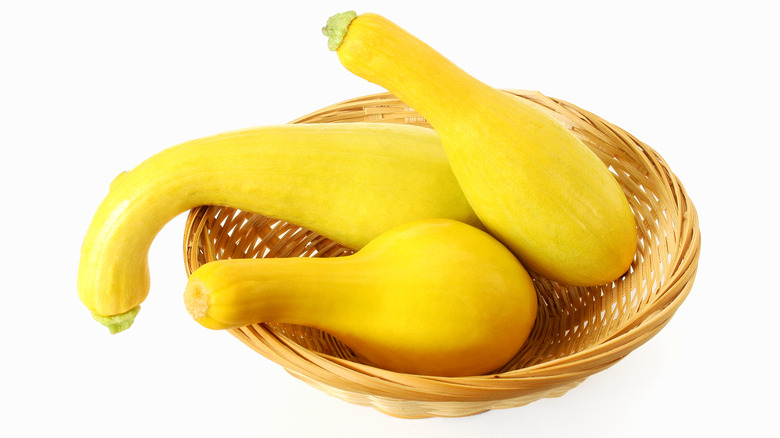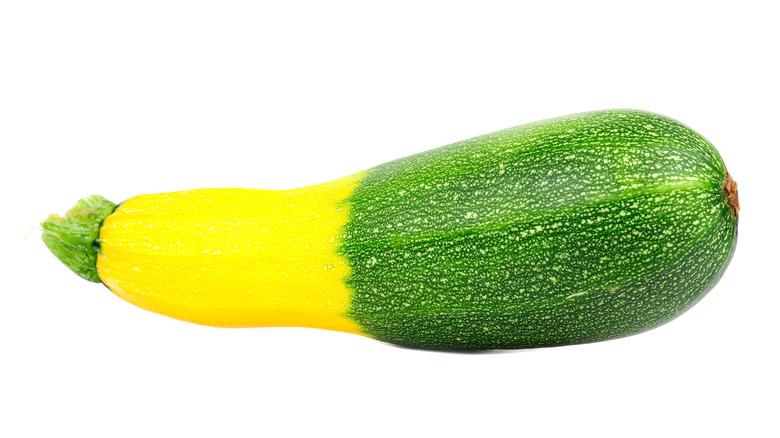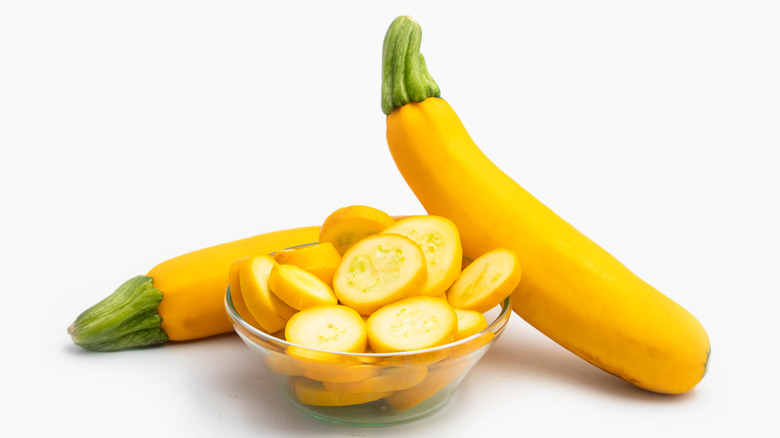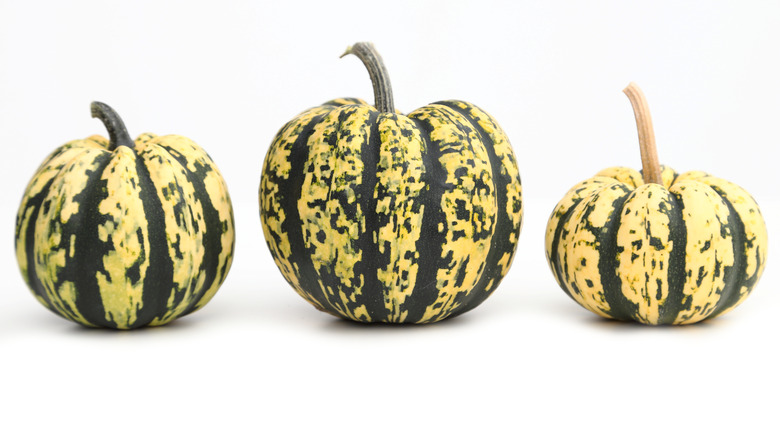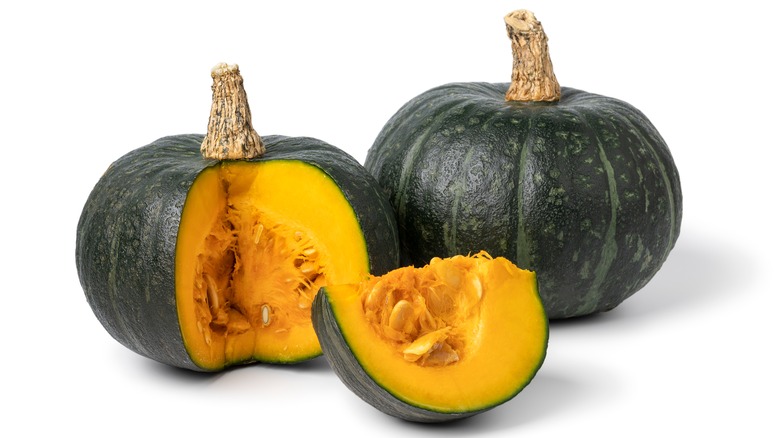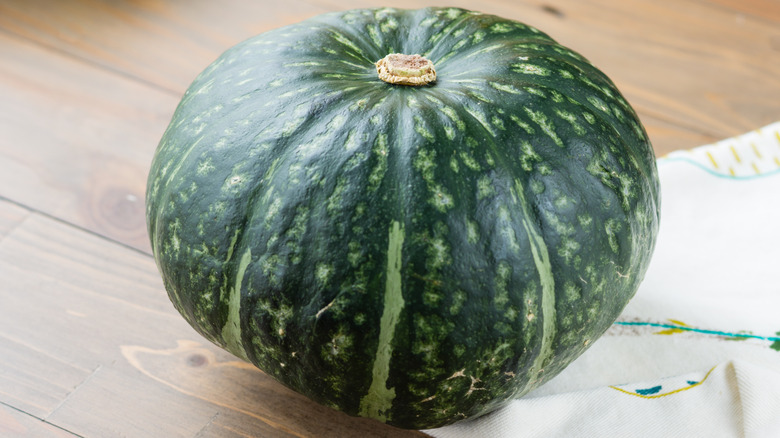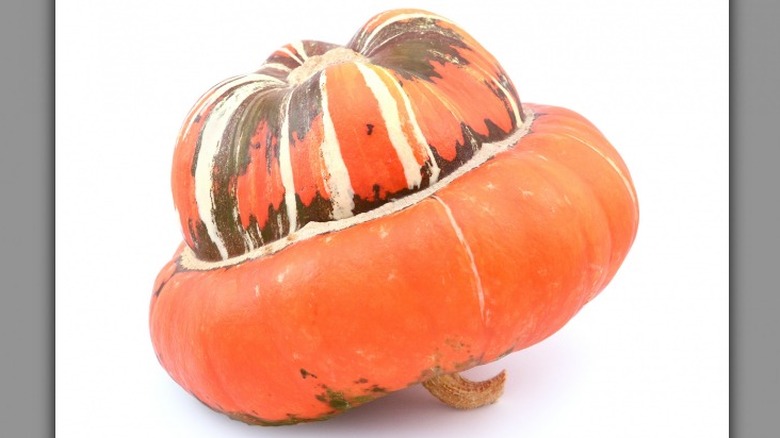15 Types Of Squash That Are Easy To Grow
So, you decided to grow a squash garden. Brilliant! Not only does this give you a gardener's bragging rights, but it also promotes straight-from-the-farm healthy meal intake and saves you the occasional shopping costs and stress. However, before you begin, you should know the mistakes everyone makes while planting squash.
Anyway, according to Rural Sprout, you should be careful in your selection of the kind of squash to plant. They said you should consider the required planting season length, whether to collect your seeds or not, the space available to accommodate the size of squash you plan to grow, the growing process, and whether you want summer or winter squash. Today, we here at House Digest are here to introduce you to 15 types of squash that are easy to grow, as well as their features, so you can choose the perfect fit for your dream garden!
Spaghetti squash
First on our list is the spaghetti squash (Cucurbita pepo). It is a winter squash, and as such, its characteristics are a hard rind and long shelf life. Spaghetti squash is relatively easy to grow because it requires only 100 days to reach maturity. It can be planted via three different methods: ground, mound, and squash rounds, claims Savvy Gardening.
Also, unlike other squash, this one isn't exactly creamy. Instead, it has a more string-like spaghetti texture and is a great option for eating healthy. According to Upgraded Home, a cool dark place is perfect for its storage.
Pumpkin squash
Although the Pumpkin Squash (Cucurbita) comes with its hard and fast rules, it is also relatively easy to grow. However, according to the Team at Gardeners World Magazine, for the best of harvests, you should consider supporting them with brick when the fruits begin to grow big.
You cannot miss this squash. According to Gardenstead, the skin is soft, making it easier to cut. Look for round pumpkins that have a dark orange color, are about 10 inches (25 centimeters) in diameter, and weigh no more than 10 pounds.
Hubbard squash
Hubbard squash (Cucurbita maxima) is another winter squash, but it stands out with its demand to be transplanted, and it can be difficult to grow. However, because the Hubbard squash grows well in the winter, you are better off planting it indoors before transplanting it into your garden for the required 100 to 120 days for maturity, writes Gardening Know How.
According to Epicurious, Hubbard squash is huge, bumpy, lumpy, and often sold as pre-cut wedges. If you have ever opened up a blue squash with sweet orange-tasting flesh, yes, that was this one.
Butternut squash
Butternut squash (Cucurbita moschata) is characterized by a bell-like shape with a long neck and an end shaped like a bulb. Once you have these three characteristics down, you cannot miss it. This squash is either medium or slightly oversized. It also sports a deep tan or a light brown color, writes Specialty Produce.
According to What's Cooking America, the butternut squash is a winter squash. Still, it is available all year round and is excellent for making soups because of its creamy flesh.
Acorn squash
Another great variety of squash to plant in the winter is the acorn squash (Cucurbita pepo var. turbinata). The Spruce Eats claims that the acorn squash has inedible, hard, thin skin and firm flesh with an ovoid shape and thick ridges.
Another pinpointed description is that the flesh is sweet with a nutlike flavor. However, the growing period for this squash is rather long, and even after the fruits are set, Johnny Seeds says they take an additional 55 to 60 days for harvest.
Lemon squash
Lemon squash could be described as an imitator of the yellow crookneck squash because they are very similar in texture and flavor. However, lemon squash is much sweeter, says The Spruce Eats This easy-to-grow squash is an heirloom breed; in other words, it is not your everyday supermarket squash. Grow these in your garden and impress the rest of the neighborhood.
FYI, lemon squash does not taste like a lemon (although we all wish it did), especially as it grows and looks like a lemon. It is usually about 2 to 3 inches long and wide, says SFGate.
Patty pan squash
The flavor of patty pan squash (Cucurbita pepo) can sometimes be mistaken for a zucchini, if not often. However, its distinct shape gives it away all of the time, says Gardening Know How. Patty pan (not krabby patty) looks a lot like a flying saucer. So if you once heard someone call it a scallop squash, they are not wrong either.
Patty pan is a summer squash that is either green, white, buttery yellow in color. They can be harvested while they are really tender and would still taste amazing.
Zucchini squash
Here is one of the most common types of squash, and perhaps every gardener's favorite type of summer squash. The zucchini (Cucurbita pepo), according to The Spruce Eats is a "long, cylindrical vegetable, slightly smaller at the stem end, usually dark green in color." As for taste, zucchini has a bit of sweetness to it, with the inside of the squash being light green in color.
Zucchini is relatively easy to grow, as Botanical Interests pegs its maturity period to be about 45 days. And also, zucchini fruit grows in a record time of two to seven days after flowering; talk about speed.
Crookneck squash
The curved neck of the crookneck squash (Cucurbita pepo) closely resembles the graceful curve of a swan's neck. It's a beloved and easy-to-grow squash not just because of its grace, but also because it can be harvested when really tender, per Garden Guides.
Essentially, the crookneck squash or yellow squash is also distinguished by its thin, flavorful skin and watery flesh. And, you can expect a yellow exterior and a pale ivory white interior, writes Specialty Produce.
Zephyr squash
Zephyr squash (Cucurbita pepo) is a hybrid squash that was developed sometime in 1991 by the team at Johnny Seeds, says Nature Produce. If it's a squash with an ombre-like color, a green bottom, and a yellow top-end with faint white stripes, that's a zephyr squash. This cross between a yellow crookneck and acorn squash is a distinctive, slender fruit that can be harvested really young at 4 to 6 inches, writes Johnny's Selected Seeds.
Also, zephyr squash is a warm-season hybrid, has an open form or habit, and is ready for harvest about 54 days after sowing sans frost, writes Harvest to Table.
Straightneck squash
We think that the most peculiar quality of this yellow straightneck squash (Cucurbita pepo) is the way it tapers down vertically from a big bottom to a thin bent neck, as explained by Produce Market Guide. This is a summer squash with pale yellow or slightly orange shells and a buttery-sweet yellow flesh.
According to Gardening Know How, you can always start the growth process indoors or go straight to the garden, and this kind of squash is ideal for areas with shorter growing seasons. Either way, it takes an average of 46 to 52 days to mature, says Bonnie Plants.
Sweet dumpling squash
Sweet dumpling (Cucurbita pepo) could easily be crowned the sweetest of them all. The primary distinguishing factor of this squash is its recessed tops. According to Rare seeds, the maturation period for sweet dumpling squash is usually 90 days. However, the fruits require an additional 40 days to give them their hardened shell, ridges, and distinct sweetness, says The Spruce Eats.
For visual recognition, you are looking for a tough but edible skin with white and green stripes and yellow or orange flesh with stringy pulp and seeds.
Kabocha squash
Looking for a finely-grained, dry yet buttery, tender, sweet, and rich flavor for your meals? The kabocha squash or Japanese squash (Cucurbita maxima) is a must-have in your garden. Although often mistaken for a buttercup squash, Specialty Produce highlights the difference, noting that it is round, squat, and flat — harsh, but true.
Another characteristic of this winter squash is the firm-textured coarse and deep green mottled color. Its interior is much more colorful, though. Here, we have a thick, spongy, yellow-orange color, says The Forked Spoon.
Buttercup squash
A delicious result from an experiment at North Dakota State University, the buttercup squash (Cucurbita maxima) has gained increasing popularity among many chefs and gardeners, writes Oregon State University. The essential thing to look out for with this type of squash is a protruding, lighter gray-green button. Every other description comes next.
These winter squashes are typically hard-shelled and have an orange, sweet yet dry, and nutty like flesh, says Delighted Cooking. They also grow well in well-draining fertile soil or compost, says Gardening Know How. They are often considered to be a single type in marketing and breeding.
Turban squash
One would think the turban squash (Cucurbita maxima) came from the Arab world. However, it has its roots in the Caribbean Islands, says AZ Martinique. Additionally, the turban pumpkin is a winter squash that can grow up to 15 inches and be as heavy as six pounds.
According to Specialty Produce, the turban squash is rather polyamorous with the colors it spots, appearing molted green, orange, red, and even yellow. Talk about having it all! However, Precision Nutrition writes that the inside is often a pale yellow and doesn't exactly have a vivid taste.
